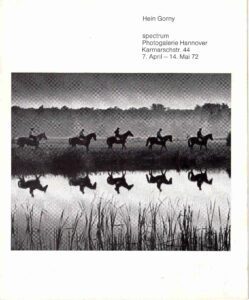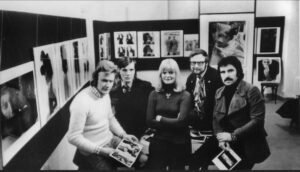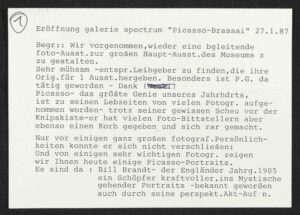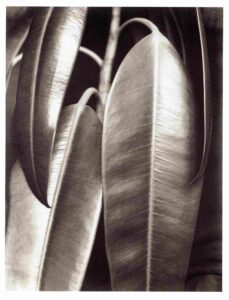Whether August Sander, Robert Capa or Barbara Klemm. The exhibition history of the spectrum Photogalerie in Hanover reads like a Who’s Who of photography history. As its co-founder, Joachim Giesel, together with his fellow photographers Heinrich Riebesehl and Peter Gauditz, made history in 1972 with the opening of one of Europe’s very first photo galleries. By 1991, the spectrum Photogalerie had presented 88 exhibitions. Giesel’s commitment to photography is revealed here in his self-image as a mediator, curator and lobbyist for photography. While photography had long been indispensable in the press and advertising in the early 1970s, it still enjoyed little recognition as an artistic medium. It was first presented as an independent art form at documenta 5 (1972) in Kassel, but even there the reactions were ambivalent. In view of this lack of social and institutional acceptance, in December 1971 the three aforementioned artists and others, including the photographer Karin Blüher and the director Wolfgang Borges, initially founded the Gesellschaft zur Förderung der Photographie (Society for the Promotion of Photography), whose aim was to “bring historical and contemporary trends in photography closer to a broad public in Hanover”. Four months later, the spectrum Photogalerie opened with a retrospective on Hein Gorny. Public funding enables the young gallery owners to realize their exhibitions parallel to their main activity as photographers and independent of commercial success through the sale of exhibits. They are doing pioneering work by establishing a network with connections to museums, galleries and studios across Europe and beyond. These contacts are the basis for exhibitions ranging from Man Ray and Henri Cartier-Bresson to the East German photographer Gundula Schulze. With its broad program, the gallery lives up to its name – it unites regional and international, historical and contemporary positions. Its exhibition activities contributed significantly to the acceptance of photography as an art form in Germany, enabling the spectrum Photogalerie founders to move to the newly built Sprengel Museum Hannover in 1979 and thus integrate photography into the museum space. Gauditz, Giesel and Riebesehl remained active there as curators until 1991, when they saw their goal of institutionalizing photography fulfilled with the establishment of a separate photography department. Thomas Weski, who had gained an insight into the gallery owners’ work as Giesel’s apprentice, took over as director. Ulrike Schneider emphasizes: “The fact that the Sprengel Museum Hannover is today one of the few German art museums that continuously presents photography as an independent art form is largely due to the commitment of Peter Gauditz, Joachim Giesel, Heinrich Riebesehl and the numerous other employees of the Spectrum Photogalerie”.
Mathilde Blum



